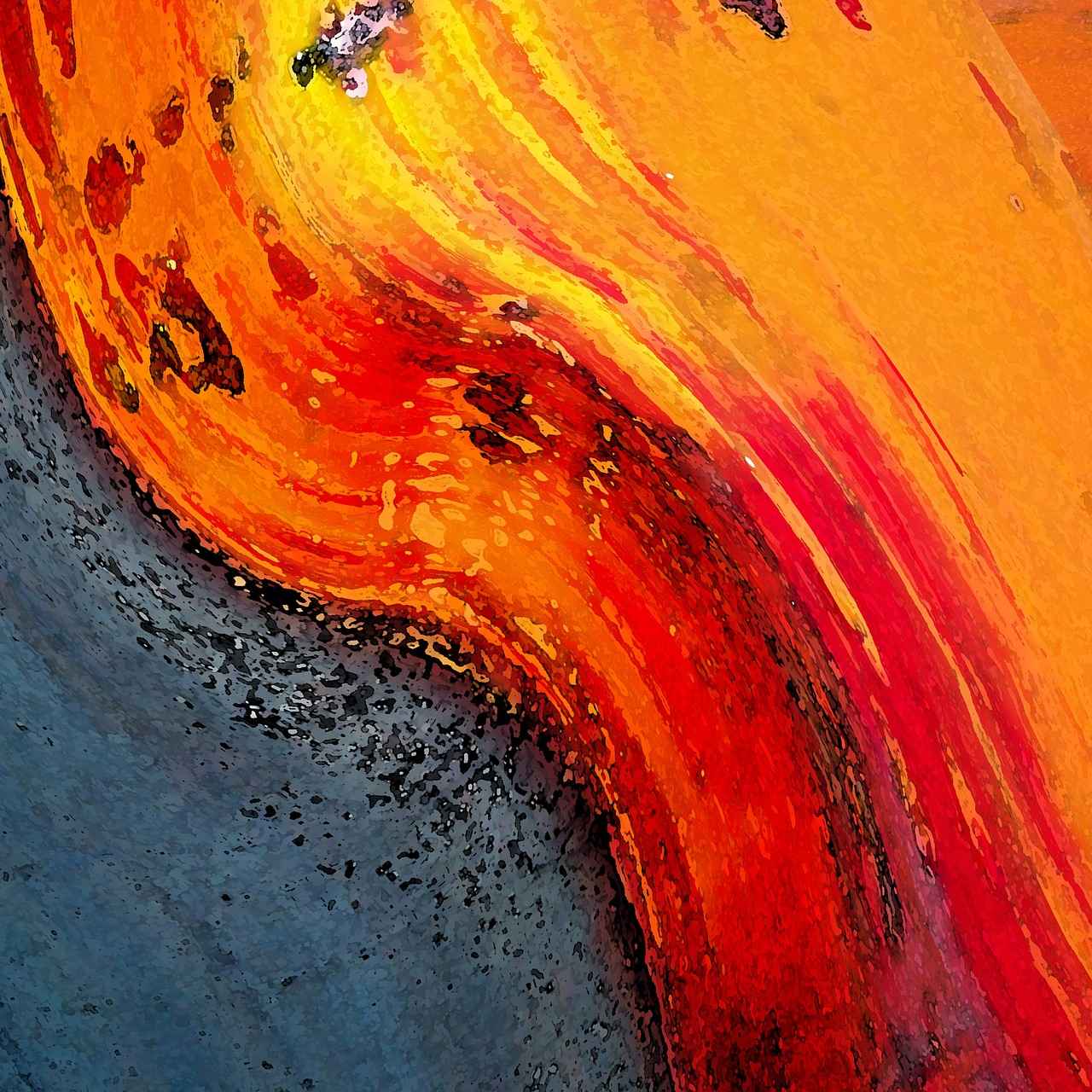This article delves into the diverse landscape of part-time remote job opportunities available for digital artists and designers. With the rise of technology and remote work, creatives can explore various roles that align with their skills and passions. Here, we discuss the roles, essential skills, platforms for job hunting, and tips for achieving success in this dynamic industry.
Understanding the Digital Art and Design Landscape
The field of digital art and design is constantly evolving, offering a plethora of opportunities for talented individuals. Staying informed about current trends and market demands is crucial for artists to effectively position their skills. Whether it’s graphic design, illustration, or animation, understanding the nuances of each niche can lead to better job prospects.
Popular Remote Job Roles for Digital Artists
- Graphic Designers: Create visual content for branding, marketing, and web design.
- Illustrators: Produce images for various media, from books to advertisements.
- Animators: Design moving graphics for films, games, and online content.
Essential Skills for Success
Regardless of the role, certain skills are universally beneficial:
- Proficiency in Design Software: Mastery of tools like Adobe Creative Suite is essential.
- Creativity and Innovation: A unique artistic vision sets successful artists apart.
- Time Management: Balancing multiple projects efficiently is key in remote settings.
Where to Find Remote Job Opportunities
Numerous platforms cater specifically to creatives seeking remote work:
- Freelance Websites: Sites like Upwork and Fiverr offer a range of job listings.
- Creative Networks: Behance and Dribbble allow artists to showcase their portfolios and connect with potential employers.
- Social Media: LinkedIn and Instagram can be powerful tools for networking and job searching.
Building a Strong Portfolio
Your portfolio is your calling card. It should:
- Showcase Your Best Work: Include a variety of pieces that highlight your skills.
- Demonstrate Your Process: Case studies can provide insight into your creative approach.
- Be Visually Appealing: Ensure your portfolio is easy to navigate and professionally presented.
Networking and Client Relationships
Networking is essential for freelance success. Engaging with fellow artists and potential clients through social media can lead to new opportunities and collaborations. Establishing clear communication with clients is vital for building trust and ensuring ongoing work.
Conclusion: Thriving in the Remote Job Market
The opportunities for digital artists and designers in the remote job market are vast and varied. By continually honing your skills, effectively networking, and presenting a strong portfolio, you can position yourself for success in this exciting field.

Understanding the Digital Art and Design Landscape
The digital art and design landscape is undergoing a remarkable transformation, presenting a plethora of opportunities for creative individuals. As technology advances and the demand for visual content grows, understanding the latest trends is crucial for artists and designers to effectively position themselves in the market.
Today, digital artists are not confined to traditional roles. Instead, they can explore a variety of niches, including graphic design, illustration, animation, and even user experience (UX) design. Each of these areas requires a unique skill set and offers different avenues for creative expression. For instance, graphic designers focus on creating visual content for branding and marketing, while illustrators may work on projects ranging from children’s books to editorial illustrations.
Moreover, the rise of digital platforms has made it easier for artists to showcase their work and connect with potential clients. Websites like Behance and Dribbble serve as excellent portfolios, allowing artists to display their skills and attract job opportunities. Networking through social media platforms such as Instagram and LinkedIn can further enhance visibility and open doors to collaborations.
As the industry evolves, staying updated with current trends is essential. Artists should continuously refine their skills and be adaptable to new technologies and methodologies. This not only helps in identifying where their talents can be best utilized but also positions them as valuable assets in a competitive job market.
In conclusion, the digital art and design field is rich with potential for those willing to embrace change and innovation. By understanding the landscape and honing their skills, artists can successfully navigate this dynamic environment and find fulfilling remote work opportunities.

Popular Remote Job Roles for Digital Artists
The digital art landscape is vibrant and diverse, offering a wide range of opportunities for artists to express their creativity while working remotely. Digital artists can explore various roles such as graphic designer, illustrator, animator, and more. Each of these roles presents unique challenges and avenues for creative expression, allowing artists to find their niche in the industry.
- Graphic Designer: Graphic designers create visual content that communicates messages effectively. They often work on branding, marketing materials, and web design. This role is pivotal in helping businesses establish their identity and connect with their audience.
- Illustrator: Illustrators specialize in creating images that tell stories or convey ideas. Their work can range from children’s book illustrations to editorial art, providing a broad spectrum of opportunities for personal expression and style.
- Animator: Animators bring static images to life through movement and storytelling. With the increasing demand for video content, animators play a crucial role in producing engaging animations for various platforms.
- Concept Artist: Concept artists design characters, environments, and other visual elements for games, films, and animations. They are essential in the pre-production phase, helping to shape the visual direction of projects.
- UI/UX Designer: User Interface (UI) and User Experience (UX) designers focus on creating intuitive and engaging interfaces for digital products. Their work ensures that users have a positive experience while interacting with websites and applications.
Each of these roles not only requires a distinct set of skills but also offers the chance to work on exciting projects that can shape the future of digital media. Whether you are drawn to the technical aspects of design or the imaginative world of illustration, there is a place for you in the remote digital art community.
As the industry continues to evolve, staying updated with the latest trends and technologies is essential for success. Embracing continuous learning and networking with other professionals can enhance your career prospects and creative growth.
Graphic Designer Jobs
Graphic designers play a crucial role in the visual communication landscape, creating eye-catching and meaningful content across various media. Their work encompasses a wide range of applications, including branding, marketing materials, and web design. As the demand for digital content continues to grow, graphic design has become a highly sought-after profession, especially in the realm of remote work.
In this digital age, companies are increasingly recognizing the importance of a strong visual identity. Graphic designers are essential in crafting logos, advertisements, social media graphics, and website layouts that resonate with target audiences. This versatility not only enhances brand recognition but also drives engagement and conversions.
Skills Required for Graphic Designers
- Proficiency in design software such as Adobe Creative Suite (Photoshop, Illustrator, InDesign)
- Strong understanding of color theory, typography, and layout design
- Creativity and the ability to think outside the box
- Attention to detail and effective communication skills
Continuous learning is vital in this fast-paced field, as design trends and technologies evolve rapidly. Graphic designers must stay updated with the latest tools and techniques to remain competitive.
Where to Find Graphic Design Jobs
Numerous platforms cater specifically to graphic designers seeking remote job opportunities. Popular options include:
- Freelance websites like Upwork and Fiverr
- Creative job boards such as Behance and Dribbble
- Social media groups focused on design professionals
Networking within these platforms can also lead to potential collaborations and job offers, making them valuable resources for aspiring graphic designers.
Conclusion
The role of graphic designers is more important than ever in today’s digital economy. By honing their skills and leveraging remote work opportunities, graphic designers can thrive in a dynamic and rewarding career path.
Skills Required for Graphic Designers
In the dynamic world of graphic design, possessing a diverse set of skills is crucial for success. Below are some essential skills that every graphic designer should develop to thrive in this competitive field:
- Proficiency in Design Software: Mastery of industry-standard software such as Adobe Photoshop, Illustrator, and InDesign is fundamental. These tools enable designers to create stunning visuals and manipulate images effectively.
- Creativity: A strong creative vision is vital. Graphic designers must think outside the box to develop unique concepts that resonate with audiences and meet client needs.
- Understanding of Color Theory: Knowledge of how colors interact and influence emotions is essential. Designers should be able to select color palettes that enhance their designs and convey the intended message.
- Typography Skills: Effective use of fonts and typefaces can significantly impact a design’s readability and aesthetic appeal. Understanding font pairing and hierarchy is crucial for creating balanced compositions.
- Attention to Detail: Precision is key in graphic design. Small details can make or break a design, so having a keen eye for detail ensures high-quality work.
- Time Management: The ability to manage multiple projects and meet deadlines is essential, especially in a fast-paced environment. Efficient time management helps designers remain productive and organized.
- Continuous Learning: The design industry evolves rapidly, with new trends and technologies emerging regularly. Staying updated through workshops, online courses, and design communities is vital for ongoing professional development.
By honing these skills, graphic designers can enhance their craft, adapt to industry changes, and increase their employability in the competitive job market.
Where to Find Graphic Design Jobs
In today’s digital age, graphic designers have a wealth of opportunities to find remote job listings across various platforms. Whether you are a seasoned professional or just starting, understanding where to look can significantly enhance your job search.
- Freelance Websites: Platforms like Upwork, Fiverr, and Freelancer are popular among graphic designers. These sites allow you to create a profile, showcase your portfolio, and bid on projects that match your skills.
- Job Boards: Websites such as Indeed, Glassdoor, and SimplyHired feature dedicated sections for remote graphic design jobs. You can filter your search to find the most relevant listings.
- Creative Networks: Platforms like Behance and Dribbble not only allow designers to showcase their work but also feature job boards specifically for creative roles. Networking within these communities can lead to job opportunities.
- Social Media Groups: Joining Facebook groups or LinkedIn communities focused on graphic design can be beneficial. Many members share job postings or freelance opportunities that may not be listed elsewhere.
Additionally, consider reaching out directly to companies you admire. Many organizations may have unadvertised positions or freelance opportunities. Building a strong online presence through a personal website or portfolio can also attract potential clients.
Networking is essential in the graphic design field. Attend virtual workshops, webinars, and industry events to connect with other professionals and stay updated on job openings.
By utilizing these platforms and strategies, graphic designers can effectively navigate the remote job market and secure positions that align with their skills and career goals.
Illustration Opportunities
In the dynamic world of digital art, illustrators play a crucial role in shaping visual narratives. They create images that not only convey ideas but also tell compelling stories. The scope of illustration is vast, ranging from enchanting children’s book illustrations to striking commercial art. Each area presents unique challenges and opportunities for artists to express their creativity.
Illustrators often collaborate with authors, publishers, and businesses, making their work essential in various industries. For instance, in the publishing sector, illustrators bring stories to life through engaging visuals that captivate young readers. On the other hand, commercial illustrators may work on branding projects, advertisements, or product designs, where their artwork serves to enhance a brand’s identity.
The versatility of illustration allows artists to explore different styles and techniques, enabling them to adapt their work to meet diverse client needs. As a result, illustrators can find themselves experimenting with digital tools, traditional mediums, or even a blend of both. This adaptability is key in a rapidly evolving market where consumer preferences shift frequently.
To succeed as an illustrator, it is essential to develop a strong portfolio showcasing a range of work. This portfolio should include various styles and themes, demonstrating the illustrator’s versatility and ability to tackle different projects. Networking within the industry is also vital, as many opportunities arise through connections and recommendations.
In conclusion, the field of illustration offers a broad spectrum of opportunities for creative individuals. By honing their skills and building a diverse portfolio, illustrators can navigate this exciting landscape and find fulfilling work that resonates with both clients and audiences.

Animation and Motion Graphics
have become pivotal in the digital landscape, especially with the increasing consumption of video content across various platforms. As a result, the demand for skilled animators and motion graphic artists is on the rise, presenting numerous job opportunities for those who are passionate about this art form.
In today’s world, where visual storytelling is paramount, animators play a crucial role in bringing ideas to life. Whether it’s for advertising, entertainment, or educational content, the ability to create compelling animations can set a project apart. This section delves into the job prospects available for aspiring animators, as well as the essential skills required to thrive in this competitive field.
| Job Title | Key Responsibilities | Skills Required |
|---|---|---|
| Animator | Creating moving images and animations for various media. | Proficiency in animation software, creativity, and storytelling. |
| Motion Graphic Designer | Designing animated graphics for videos. | Strong design skills, knowledge of typography, and software expertise. |
| 3D Modeler | Creating 3D assets for animations and games. | Understanding of 3D modeling software and spatial awareness. |
To succeed as an animator, one must develop a robust skill set that includes storytelling, a keen sense of timing, and proficiency in various animation software such as Adobe After Effects, Maya, or Blender. Mastery of animation principles, including squash and stretch, timing, and anticipation, is vital for producing engaging content that resonates with audiences.
Finding remote animation jobs can be accomplished through various channels. Specialized job boards such as Animation Jobs and Creative COW, along with freelance platforms like Upwork and Fiverr, offer numerous opportunities. Additionally, networking within creative communities on social media platforms can lead to potential job offers and collaborations.
In conclusion, the field of animation and motion graphics is brimming with opportunities for those willing to invest time in honing their skills and building a strong portfolio. By staying updated with industry trends and continuously improving their craft, aspiring animators can secure fulfilling remote positions in this dynamic field.
Essential Skills for Animators
In the dynamic world of animation, animators are the architects of visual storytelling. To excel in this field, a robust set of skills is necessary. Below, we delve into the essential skills that every animator should master to create captivating animations.
- Storytelling: At the heart of animation lies the ability to tell a compelling story. Animators must understand narrative structure, character development, and emotional arcs to engage their audience effectively.
- Timing: Timing is crucial in animation. It involves understanding the rhythm of movement and the pacing of scenes to create a believable flow. Mastering timing can elevate an animator’s work, making it more impactful.
- Software Proficiency: Familiarity with industry-standard software such as Adobe After Effects, Maya, or Blender is essential. Animators should continually update their skills to keep pace with technological advancements and new tools.
- Animation Principles: Mastery of the 12 principles of animation, such as squash and stretch, anticipation, and exaggeration, is vital. These principles form the foundation of effective animation and help in creating more lifelike movements.
- Creativity and Artistic Skills: A strong artistic background enhances an animator’s ability to create visually appealing characters and scenes. This includes understanding color theory, composition, and design.
- Collaboration: Animation often involves teamwork. Being able to collaborate with other artists, directors, and clients is crucial for bringing a project to life.
By honing these skills, animators can significantly enhance their craft, leading to more engaging and effective animations. In a field that thrives on creativity and innovation, continuous learning and adaptation are key to success.
Finding Animation Jobs
in today’s digital landscape can be both exciting and challenging for aspiring animators. The demand for skilled animators has surged as businesses and content creators increasingly rely on animated visuals to engage their audiences. Here, we will explore various avenues to discover remote animation jobs, ensuring you have the tools and knowledge to succeed in this competitive field.
Remote animation jobs can be located through a variety of specialized platforms that cater specifically to creative professionals. Websites such as Animation Jobs, ArtStation, and Behance are excellent starting points. These platforms not only list job openings but also allow you to showcase your portfolio, making it easier for potential employers to find you.
In addition to job boards, consider joining creative networks and communities where animators gather. Platforms like LinkedIn and Facebook Groups dedicated to animation can provide valuable networking opportunities. Engaging with other professionals in the field can lead to collaborations and job referrals, enhancing your chances of landing a remote position.
Another effective strategy is to conduct direct outreach to studios and production companies. Research organizations that align with your interests and skill set, and reach out with a personalized email expressing your interest in freelance opportunities. This proactive approach demonstrates your enthusiasm and can set you apart from other candidates.
Lastly, participating in online forums and attending virtual workshops can help you stay updated on industry trends and job openings. Websites like Reddit have dedicated threads for job postings and discussions, which can be beneficial for finding hidden opportunities.
In conclusion, by leveraging specialized job boards, engaging with creative communities, and reaching out directly to potential employers, you can enhance your chances of finding remote animation jobs that match your skills and interests. Embrace these strategies, and you will be well on your way to a successful career in animation.

Building a Winning Portfolio
A strong portfolio is essential for securing remote work, especially in the competitive fields of digital art and design. This section will guide you on how to effectively curate and present your work to attract potential employers.
What to Include in Your Portfolio
- Showcase Your Best Work: Select pieces that highlight your skills and creativity. Aim for quality over quantity.
- Diverse Projects: Include a variety of styles and mediums to demonstrate your versatility. This can encompass illustrations, graphic designs, and animations.
- Case Studies: Provide context for your work by including case studies. Explain your creative process, the challenges you faced, and how you solved them.
Tips for Presenting Your Work Online
- Choose the Right Platform: Utilize platforms such as Behance, Dribbble, or your own personal website to host your portfolio.
- Visual Appeal: Ensure your portfolio is visually appealing and easy to navigate. Use a clean layout that allows your work to shine.
- Regular Updates: Keep your portfolio updated with your latest projects to reflect your current skills and style.
Engaging Your Audience
When presenting your work, consider your audience. Tailor your portfolio to the specific needs of potential employers or clients. Highlight projects that align with their interests or industry trends.
Conclusion
In summary, a well-curated portfolio is a vital tool for attracting remote work opportunities. By showcasing your best work, maintaining an engaging online presence, and understanding your audience, you can significantly enhance your chances of success in the digital art and design landscape.
What to Include in Your Portfolio
Creating a compelling portfolio is vital for any digital artist or designer seeking remote work. A well-structured portfolio not only showcases your best work but also highlights your unique skills and demonstrates your versatility across various projects. Here are some essential elements to consider when curating your portfolio:
- Best Work Showcase: Select your top pieces that reflect your style and capabilities. Aim for quality over quantity; a few outstanding works are more impactful than numerous average ones.
- Skill Highlighting: Clearly present the range of skills you possess. This might include graphic design, illustration, animation, or other relevant abilities. Use labels or sections to categorize your work based on skills.
- Versatility Demonstration: Include a variety of projects to show your adaptability. This could range from branding projects to digital illustrations, showcasing your ability to tackle different styles and mediums.
- Case Studies: Incorporate case studies that provide context for your work. Detail the challenges you faced, the solutions you implemented, and the results achieved. This gives potential employers insight into your creative process and problem-solving skills.
- Process Work: Show the evolution of your projects, including sketches, drafts, and final pieces. This not only illustrates your artistic journey but also emphasizes your dedication to the craft.
- Client Testimonials: If applicable, include feedback from clients or collaborators. Positive testimonials can enhance your credibility and provide evidence of your professionalism.
In conclusion, a well-rounded portfolio is a powerful tool for digital artists and designers. By thoughtfully selecting and presenting your work, you can effectively communicate your skills and creative vision, making a lasting impression on potential employers.
Tips for Presenting Your Work Online
In the competitive world of digital art and design, having a visually appealing and well-structured portfolio is crucial. Utilizing platforms such as Behance, Dribbble, and personal websites can significantly enhance your visibility and attract potential clients. Here are some essential tips to ensure your online portfolio makes a lasting impression:
- Choose the Right Platform: Select a platform that aligns with your style and target audience. For instance, Behance is great for showcasing projects, while Dribbble is ideal for sharing design snippets.
- Focus on Navigation: Make sure your portfolio is easy to navigate. A clear structure allows visitors to find your work quickly, which can lead to increased engagement.
- Visual Appeal: Use high-quality images and maintain a consistent aesthetic throughout your portfolio. This helps create a polished look that reflects your professionalism.
- Curate Your Work: Only include your best pieces. Quality over quantity is key; showcasing a limited number of exceptional works can be more impactful than displaying everything you’ve ever created.
- Include Case Studies: Providing context for your projects can help potential clients understand your thought process and problem-solving skills. Describe your role, the challenges faced, and the outcomes achieved.
- Keep It Updated: Regularly update your portfolio with new work or revisions to existing pieces. An up-to-date portfolio demonstrates that you are active in your field and continuously improving your skills.
By implementing these strategies, you can create a portfolio that not only showcases your talent but also effectively communicates your unique style and capabilities to potential clients.

Networking and Finding Clients
Networking is a fundamental pillar for achieving freelance success in the digital art community. In a field where opportunities often arise through connections, understanding how to effectively network can significantly enhance your chances of finding clients and establishing lasting professional relationships.
To begin with, leveraging social media platforms is essential. Websites like Instagram, LinkedIn, and Twitter are not just for showcasing your work; they also serve as powerful tools for connecting with potential clients and fellow artists. Regularly sharing your projects and engaging with others in the community can increase your visibility and lead to new opportunities. Consider joining groups or forums related to digital art, where you can share insights and collaborate with others.
Another effective strategy is to participate in online art communities and forums. Websites such as DeviantArt and ArtStation provide spaces for artists to showcase their portfolios, receive feedback, and network with industry professionals. Engaging in discussions, offering critiques, and collaborating on projects can help you build a reputation within these communities.
Moreover, attending virtual events such as webinars, workshops, and art fairs can be beneficial. These events often feature industry leaders and provide opportunities to learn about current trends while connecting with potential clients. Networking in these settings can lead to valuable contacts and insights into what clients are looking for.
Building client relationships is equally important. Once you establish contact with potential clients, focus on developing trust and clear communication. Be proactive in understanding their needs and preferences, and ensure that you deliver quality work consistently. This approach not only helps in securing repeat business but also encourages referrals.
In conclusion, networking is a continuous process that requires effort and engagement. By utilizing social media, participating in online communities, attending virtual events, and nurturing client relationships, digital artists can significantly enhance their chances of success in the freelance market.
Leveraging Social Media for Networking
In today’s digital age, platforms like Instagram and LinkedIn have emerged as essential tools for digital artists and designers to not only showcase their work but also to connect with industry peers. These platforms offer unique opportunities to engage with a vast audience, making it easier to establish a professional presence.
Instagram: A Visual Showcase
- Visual Appeal: Instagram’s focus on visual content allows artists to display their portfolios in a captivating manner. By sharing high-quality images of their work, artists can attract followers and potential clients.
- Engagement: Regularly engaging with followers through comments, stories, and direct messages can foster community and encourage collaborations.
- Hashtags: Utilizing relevant hashtags can increase visibility and help artists reach a broader audience interested in their specific niche.
LinkedIn: Building Professional Connections
- Professional Networking: LinkedIn is tailored for professional connections, allowing artists to network with industry leaders, potential employers, and fellow creatives.
- Showcasing Skills: Artists can highlight their skills and experiences on LinkedIn, making it easier for recruiters to find them based on specific job requirements.
- Joining Groups: Participating in relevant LinkedIn groups can provide insights into industry trends and open up opportunities for collaboration.
Engaging with the Community
By actively engaging with the community on these platforms, artists can build a supportive network that leads to new opportunities. Whether through sharing work, participating in discussions, or collaborating on projects, the connections made can significantly impact one’s career.
In conclusion, leveraging social media effectively can enhance visibility, foster relationships, and ultimately lead to a successful career in digital art and design. Artists should embrace these platforms not just as tools for promotion, but as avenues for meaningful networking and collaboration.
Building Client Relationships
is a cornerstone of success in the freelance world, especially for digital artists and designers. Establishing trust and maintaining clear communication with clients is essential for fostering long-term partnerships and ensuring repeat business.
To build strong client relationships, consider the following strategies:
- Open Communication: Always keep lines of communication open. Regular updates, whether through emails or project management tools, help clients feel involved and informed.
- Set Clear Expectations: At the start of any project, outline the scope, deadlines, and deliverables. This clarity helps prevent misunderstandings and builds trust.
- Be Responsive: Timely responses to client inquiries show that you value their time and are committed to the project. Aim to reply to messages within 24 hours.
- Solicit Feedback: Encourage clients to provide feedback during and after projects. This not only helps you improve your work but also shows clients that you value their opinions.
- Personal Touch: Take the time to get to know your clients. A personal touch, such as remembering their preferences or milestones, can strengthen your relationship significantly.
- Deliver Quality Work: Consistently delivering high-quality work is the best way to build trust. Meeting or exceeding expectations will encourage clients to return for future projects.
- Follow Up: After project completion, follow up with clients to ensure they are satisfied with the results. This gesture shows that you care about their experience and are interested in their long-term success.
In conclusion, building and maintaining client relationships is a vital component of a successful freelance career. By focusing on communication, responsiveness, and quality, digital artists and designers can create lasting partnerships that lead to repeat business and referrals.

Tips for Success in Remote Work
Balancing work and life while working remotely can be challenging. The shift to remote work has transformed how we approach our professional and personal lives. While this flexibility offers numerous benefits, it also presents unique challenges that require thoughtful strategies to navigate effectively.
To help you thrive in a remote work environment, here are some practical tips for managing your time, staying motivated, and maintaining productivity:
- Establish a Routine: Creating a daily schedule can help you maintain a sense of normalcy. Start your day at the same time, allocate specific hours for work tasks, and include breaks to recharge.
- Create a Dedicated Workspace: Designate a specific area in your home as your workspace. This helps to mentally separate work from personal life and can enhance focus and productivity.
- Set Clear Boundaries: Communicate your work hours to family and friends to minimize distractions. This ensures that you can focus during work hours without interruptions.
- Use Time Management Techniques: Techniques such as the Pomodoro Technique—working in focused bursts followed by short breaks—can enhance your efficiency and prevent burnout.
- Stay Connected: Regularly check in with colleagues through video calls or messaging platforms. This fosters a sense of community and helps combat feelings of isolation.
- Prioritize Tasks: Use to-do lists or digital tools to prioritize your tasks. This not only keeps you organized but also provides a sense of accomplishment as you complete each item.
- Incorporate Physical Activity: Include short exercise breaks in your schedule. Physical activity can boost your mood, increase energy levels, and improve overall productivity.
- Reflect and Adjust: At the end of each week, take time to reflect on what worked and what didn’t. Adjust your strategies accordingly to find the best balance for your work and life.
By implementing these strategies, you can create a more harmonious balance between your professional and personal life, ultimately leading to greater satisfaction and success in your remote work journey.
Creating an Effective Workspace
Establishing a dedicated workspace is essential for enhancing focus and productivity. An inspiring environment can significantly influence your creativity and work efficiency. Here are some strategies to create a workspace that fosters innovation and concentration.
- Choose the Right Location: Select a quiet area in your home that is free from distractions. Ideally, this space should be separate from your living areas to help you mentally switch into work mode.
- Ergonomic Setup: Invest in a comfortable chair and desk that promote good posture. Your workspace should be designed to minimize physical strain, allowing you to work for extended periods without discomfort.
- Natural Light: Whenever possible, position your workspace near a window. Natural light can boost your mood and energy levels, making it easier to stay focused.
- Personal Touch: Decorate your workspace with items that inspire you, such as artwork, plants, or motivational quotes. A personalized environment can enhance your creativity and make work feel more enjoyable.
- Organizational Tools: Keep your workspace tidy with organizational tools like shelves, file cabinets, and desk organizers. A clutter-free environment helps clear your mind and improves productivity.
- Technology Setup: Ensure your technology is up-to-date and functioning properly. Invest in a reliable computer, high-speed internet, and any necessary software to streamline your workflow.
Additionally, consider establishing a routine that includes regular breaks. Short breaks can help refresh your mind and prevent burnout. Techniques like the Pomodoro Technique can be particularly effective in managing your time and maintaining productivity.
In conclusion, a well-thought-out workspace can dramatically enhance your ability to work efficiently and creatively. By implementing these strategies, you can create an environment that not only boosts your productivity but also inspires you to achieve your goals.
Time Management Strategies
are essential for anyone looking to enhance productivity, especially in the fast-paced world of remote work. With the increasing demand for digital artists and designers to juggle multiple projects, mastering time management is not just beneficial; it’s crucial for success.
To effectively manage your time, consider incorporating the following strategies:
- Pomodoro Technique: This method involves working in focused bursts of 25 minutes, followed by a 5-minute break. After four cycles, take a longer break of 15-30 minutes. This approach helps maintain concentration and prevents burnout.
- Task Prioritization: Utilize a priority matrix to categorize tasks based on urgency and importance. This helps in focusing on what truly matters and ensures deadlines are met without unnecessary stress.
- Time Blocking: Allocate specific blocks of time for different tasks or projects throughout your day. This not only helps in organizing your schedule but also minimizes distractions.
- Set Clear Goals: Establish both short-term and long-term goals. Break them down into manageable tasks. This clarity helps in maintaining motivation and tracking progress.
- Limit Distractions: Identify what distracts you the most and take steps to minimize these interruptions. This could mean creating a dedicated workspace or using apps that block distracting websites.
Implementing these strategies can significantly improve your workflow and enable you to meet deadlines more efficiently. Remember, the key to effective time management lies in consistency and adaptability. Regularly assess your methods and be willing to adjust them as your workload or circumstances change.
In conclusion, mastering time management is a vital skill for digital artists and designers in remote work environments. By utilizing techniques like the Pomodoro Technique and prioritizing tasks, you can enhance your productivity, meet deadlines, and achieve your creative goals.

Conclusion: Embracing the Future of Digital Art
The landscape for digital artists and designers is continuously evolving, presenting a multitude of opportunities for those willing to adapt and innovate. As technology advances, so too do the avenues available for creative expression and professional growth.
Understanding the current trends in the digital art and design industry is crucial. By recognizing where their skills can be utilized effectively, artists can position themselves strategically within the market. For instance, the rise of virtual reality and augmented reality has opened new realms for digital creativity, allowing artists to explore immersive experiences that were previously unimaginable.
Moreover, honing essential skills is vital for success. Digital artists must stay updated with the latest software and design techniques, ensuring their work remains relevant and competitive. Participating in online courses, workshops, and webinars can greatly enhance their skill set and keep them informed about industry standards.
Networking is another critical component of thriving in the remote job market. Building connections with other professionals, joining online communities, and engaging on platforms like LinkedIn and Instagram can lead to potential collaborations and job opportunities. A strong network can provide invaluable support and resources, making it easier to navigate the challenges of freelance work.
In conclusion, the future for digital artists and designers is bright, filled with possibilities for those who are proactive. By understanding the landscape, continuously improving their skills, and effectively networking, creatives can not only survive but thrive in the ever-expanding remote job market. Embracing these strategies will empower them to achieve their artistic and professional goals, paving the way for a successful career in digital art and design.
Frequently Asked Questions
- What types of part-time remote jobs are available for digital artists?
Digital artists can explore various roles such as graphic designers, illustrators, animators, and motion graphic artists. Each position offers unique challenges and creative opportunities tailored to different skill sets.
- How can I find remote job listings as a digital artist?
There are numerous platforms to find remote job listings, including freelance websites like Upwork and Fiverr, job boards such as Indeed and Glassdoor, and social media groups dedicated to creative professionals. Networking within these communities can also lead to job opportunities.
- What skills are essential for success in digital art and design?
Essential skills include proficiency in design software (like Adobe Creative Suite), a strong sense of creativity, understanding color theory and typography, and continuous learning to keep up with industry trends. For animators, storytelling and timing are also crucial.
- How important is a portfolio for getting remote work?
A strong portfolio is vital for showcasing your best work and demonstrating your skills to potential employers. It should highlight your versatility and include case studies to provide insight into your creative process.
- What are some effective time management strategies for remote work?
Techniques like the Pomodoro Technique, where you work in short bursts followed by breaks, and task prioritization can greatly enhance your productivity. Establishing a routine and setting clear goals can also help maintain focus.
